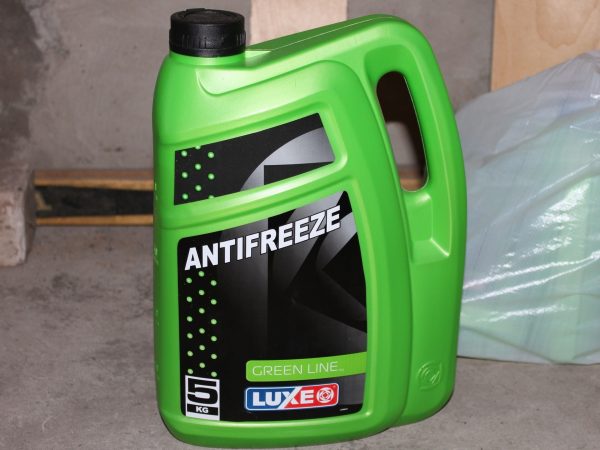
At what temperature and why does antifreeze boil
Content
The normal functioning of an automobile motor is possible only if it is cooled due to the constant circulation of coolant through the appropriate channels. Sometimes car owners have a problem when antifreeze reaches the boiling point. If you do not react to such a phenomenon in any way and continue to operate the car, then serious problems with the engine are possible in the near future. Therefore, every motorist should know not only about the causes of coolant boiling, but also about what to do in such a situation.
Boiling point of antifreeze and antifreeze of different classes
Antifreeze is a substance used as a coolant (coolant) in the cooling system of vehicles. However, many car owners habitually call antifreeze antifreeze. The latter is a brand of antifreeze. It began to be produced back in the days of the USSR, and then there was no alternative to this tool. The composition of antifreeze and antifreeze have differences:
- antifreeze contains water and ethylene glycol, as well as additives based on salts of inorganic acids;
- antifreeze also includes ethylene glycol or propylene glycol, water and additives. The latter are used on the basis of organic salts and improve the anti-foam and anti-corrosion properties of the coolant.
Antifreezes come in different classes, which are characterized by their own color marking:
- G11 - blue or green, or blue-green;
- G12 (with and without pluses) - red with all shades: from orange to lilac;
- G13 - purple or pink, but in theory they can be any color.

The main difference between the classes of antifreeze lies in the different bases and characteristics of the fluids. If earlier water was poured into the cooling system of cars, which boiled at +100 ° C, then the use of the type of coolant in question made it possible to increase this value:
- blue and green antifreezes are endowed with approximately the same boiling points - + 109–115 ° С. The difference between them is the freezing point. For green antifreeze, it is about -25 ° C, and for blue it is from -40 to -50 ° C;
- red antifreeze has a boiling point of + 105–125 ° С. Thanks to the additives used, the probability of its boiling is reduced to zero;
- class G13 antifreeze boils at a temperature of + 108–114 ° C.
The consequences of boiling antifreeze
If the coolant boils for a short time, nothing bad will happen to the engine. However, if you continue to operate the machine with the problem for more than 15 minutes, the following consequences may occur:
- damage to the pipes of the cooling system;
- leakage in the main radiator;
- increased wear of piston rings;
- lip seals will no longer perform their functions, which will lead to the release of lubricant to the outside.

If you drive a car with boiling antifreeze for a long time, then more serious breakdowns are possible:
- destruction of valve seats;
- damage to the cylinder head gasket;
- destruction of the partitions between the rings on the pistons;
- valve failure;
- damage to the cylinder head and the piston elements themselves.
Video: the consequences of engine overheating
Why does antifreeze boil in the cooling system
There are many reasons why antifreeze can boil. Therefore, it is worth dwelling on each of them in more detail.
Insufficient amount of coolant
If antifreeze boils in an expansion tank on your car, first of all, attention should be paid to the coolant level. If it was noticed that the fluid level is less than normal, you will need to bring it to normal. Topping up is done as follows:
- If the antifreeze has not been added to the system for a long time, you need to wait for it to cool down, since the hot coolant is under pressure and will splash out when the plug is opened.
- If the liquid was added recently and its level has dropped, it is necessary to check the tightness of the cooling system (tighten the clamps, inspect the pipes for integrity, etc.). Having found the place of leakage, it is necessary to eliminate the breakdown, add coolant and only after that continue driving.
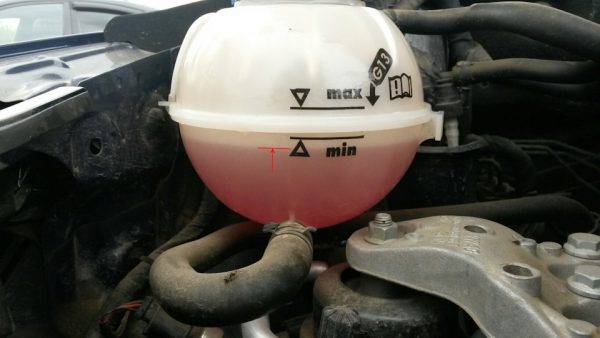

Broken thermostat
The purpose of the thermostat is to regulate the temperature of the coolant in the cooling system. With this device, the motor warms up faster and runs at optimal temperature. The cooling system has two circuits - large and small. The circulation of antifreeze through them is also regulated by a thermostat. If problems arise with it, then the antifreeze circulates, as a rule, in a small circle, which manifests itself in the form of overheating of the coolant.
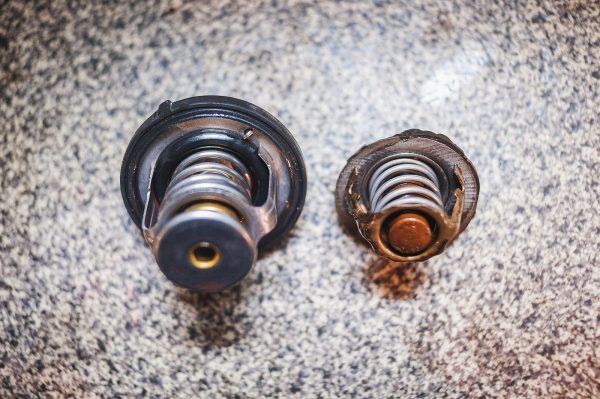

You can identify that the boiling of antifreeze is caused by problems with the thermostat in this way:
- We start a cold engine and warm it up for several minutes at idle.
- We find the branch pipe going from the thermostat to the main radiator, and touch it. If it remains cold, then the coolant circulates in a small circle, as it should initially be.
- When the antifreeze temperature reaches +90 ° C, touch the upper pipe: with a working thermostat, it should be well warmed up. If this is not the case, then the liquid circulates in a small circle, which is the cause of overheating.
Video: checking the thermostat without removing it from the car


Watch this video on YouTube
Fan failure
When breakdowns occur with the ventilating device, the coolant cannot cool itself to the desired temperature. The reasons can be very different: a breakdown of the electric motor, wiring damage or poor contact, problems with sensors. Therefore, if a similar problem occurs in each individual case, it is necessary to deal with possible problems in more detail.
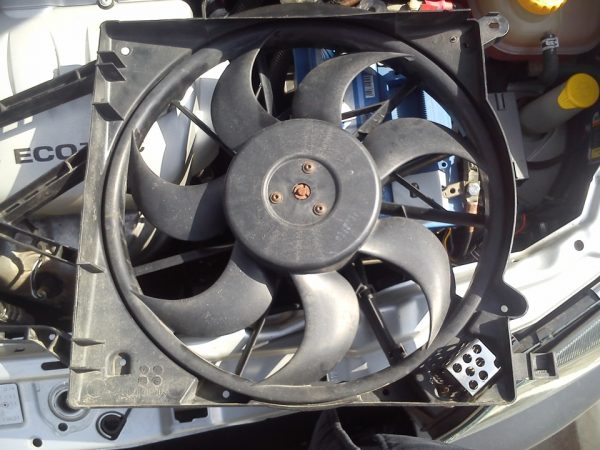

Airlock
Sometimes an air lock occurs in the cooling system - an air bubble that prevents the normal circulation of the coolant. Most often, the cork appears after replacing the antifreeze. To avoid its occurrence, it is recommended to raise the front of the car, for example, by setting the car at an angle, then unscrew the radiator cap and start the engine. After that, the assistant should press the gas pedal with the engine running, and at this time you squeeze the pipes of the system until air bubbles no longer appear in the radiator neck. After the procedure, the coolant must be brought to normal.
Video: how to remove an airlock from a cooling system


Watch this video on YouTube
Poor quality coolant
The use of low-quality antifreeze is reflected in the service life of the elements of the cooling system. Most often, the pump is damaged. The impeller of this mechanism is covered with corrosion, and various deposits can also form on it. Over time, her rotation deteriorates and eventually, she may stop altogether. As a result, the circulation of the coolant will stop, which will lead to the rapid boiling of antifreeze in the system. Boiling in this case will also be observed in the expansion tank.
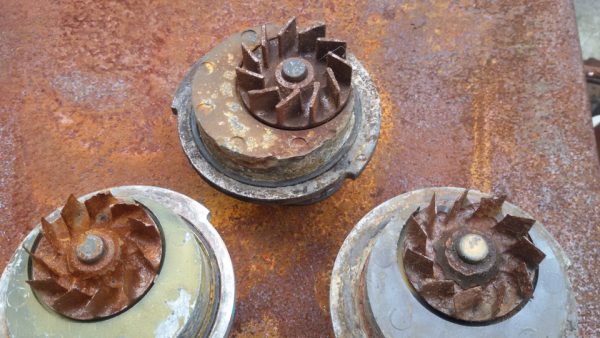

Depending on the quality of the pump itself and the antifreeze, the impeller can be completely "eaten" by low-quality coolant. The latter can be so aggressive that within a short period of time the internal elements of the pump will be destroyed. In such a situation, the water pump shaft rotates, but the coolant does not circulate and boils.
Driving a car with a failed pump can lead to serious engine damage. Therefore, in the event of a breakdown with this mechanism, it is better to use the services of a tow truck.
Foaming antifreeze
In the expansion tank, one can observe not only the boiling of antifreeze, but also the appearance of foam. This can happen even on a cold engine.
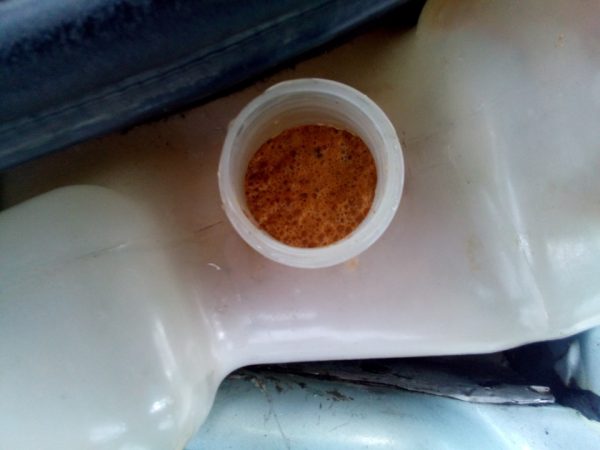

There are several reasons for this phenomenon:
- Tosol low quality.
- Mixing coolants of different classes.
- Use of antifreeze that does not meet the manufacturer's recommendations. Therefore, before filling in a new coolant, you should familiarize yourself with its properties, which are described in the car's operating manual.
- Cylinder head gasket damage. When the gasket located between the cylinder head and the block itself is damaged, air enters the channels of the cooling system, which can be observed in the form of foam in the expansion tank.
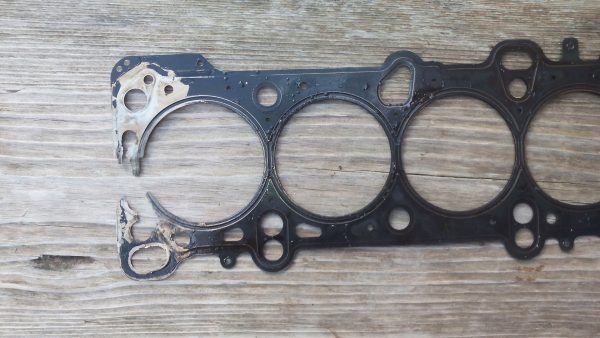

If in the first three situations it is enough to replace the coolant, then in the latter it will be necessary to replace the gasket, as well as a careful inspection and check of the cylinder head and block for a violation of the contact plane.
Radiator malfunction
The following malfunctions are possible with a cooling radiator:
- Radiator cells become clogged with scale over time, which impairs heat transfer. This situation often occurs during the operation of low-quality antifreeze.
- The ingress of dirt and blockage of honeycombs from the outside. In this case, air circulation is reduced, which also leads to an increase in coolant temperature and boiling.


With any of the listed malfunctions, it is possible to drive a car, but with interruptions for cooling the coolant.
Waste refrigerant
As a result of the loss of its original properties, antifreeze may also begin to boil. This is explained by a change in the chemical composition of the liquid, which is reflected in the boiling point. A clear sign indicating the need to replace the coolant is the loss of the original color and the acquisition of a brown color, which indicates the beginning of corrosion processes in the system. In this case, it is enough to replace the fluid.
Video: signs of spent antifreeze


Watch this video on YouTube
What to do when antifreeze and antifreeze boil in the system
When the antifreeze boils, thick white smoke comes out from under the hood, and the temperature indicator on the tidy shows more than +100 ° C. To avoid serious consequences, you must immediately perform the following actions:
- We remove the load from the motor, for which we select the neutral gear and let the car coast without turning off the engine.
- We turn on the heater for faster cooling of the coolant.
- We turn off the engine as soon as the car stops completely, but do not turn off the stove.
- We open the hood for better airflow under the hood and wait about 30 minutes.
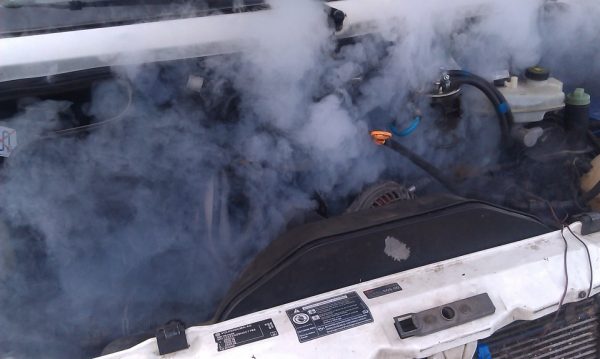

After the procedures done, there are two options for solving the problem:
- find and fix the problem on your own, if this can be done on the road and you understand cars;
- call a tow truck.
If there is no opportunity to repair the car or call a tow truck, you need to move to the nearest service station with breaks to cool the coolant.
How to prevent a repeat of the situation
Knowing the reasons why the coolant boils allows you to understand and find a malfunction. However, it would be useful to familiarize yourself with the measures that prevent the occurrence of such a situation in the future:
- Use antifreeze recommended by the car manufacturer for the car.
- To dilute the coolant, use water, the hardness of which does not exceed 5 units.
- If a malfunction occurs in the engine cooling system, due to which the temperature of the antifreeze begins to rise, it should not be brought to a boil. Otherwise, the useful properties of the coolant are lost, which make it possible to effectively cool the engine.
The boiling of antifreeze in the expansion tank can occur for various reasons. Knowing about them, you can not only fix the problem with your own hands, but also prevent engine breakdown and avoid costly repairs.

